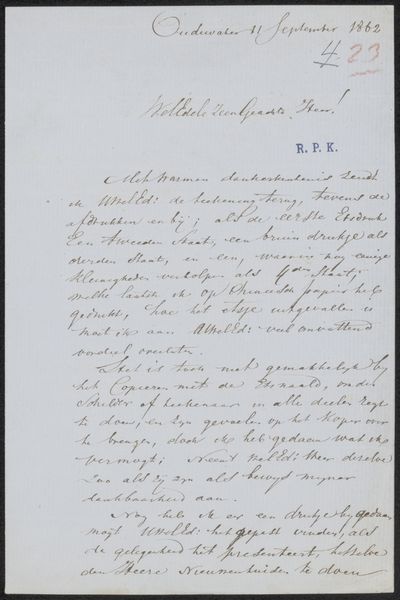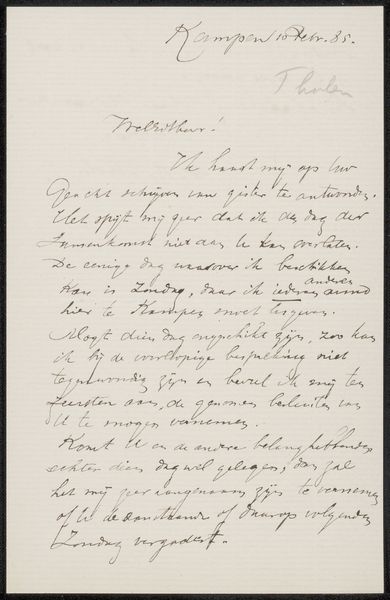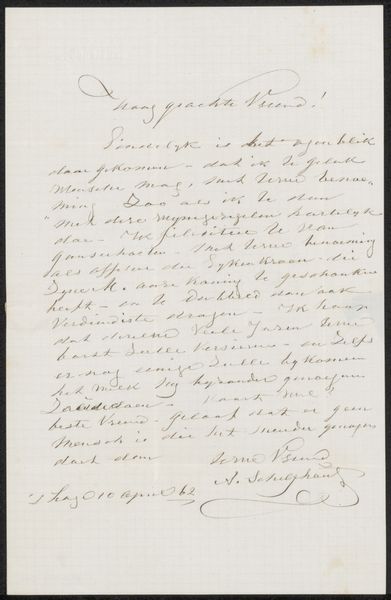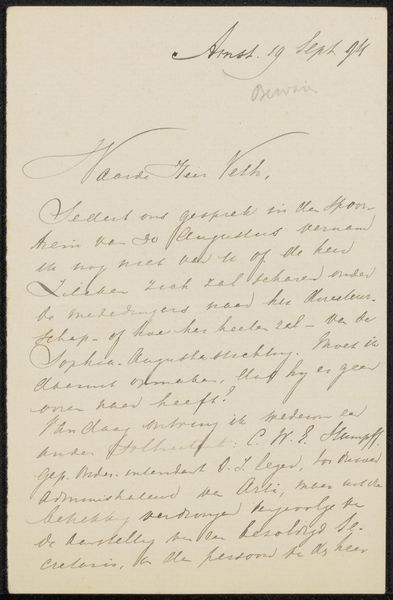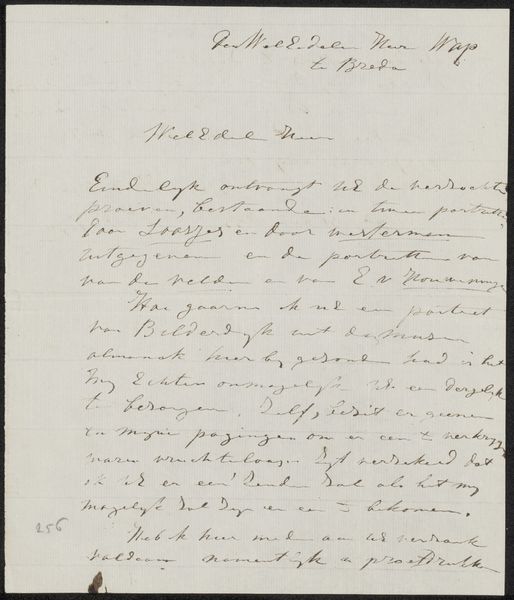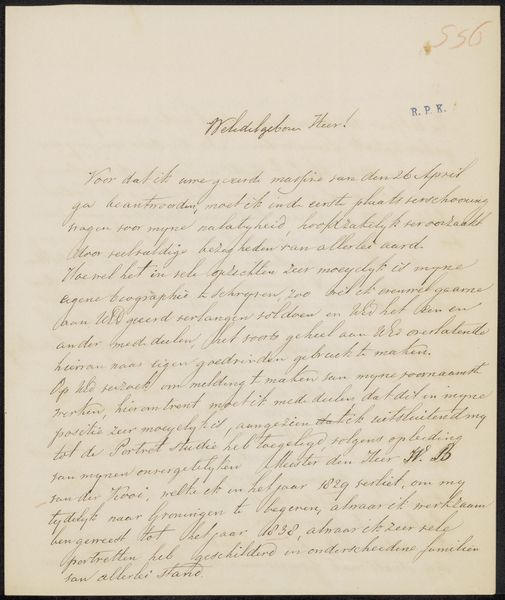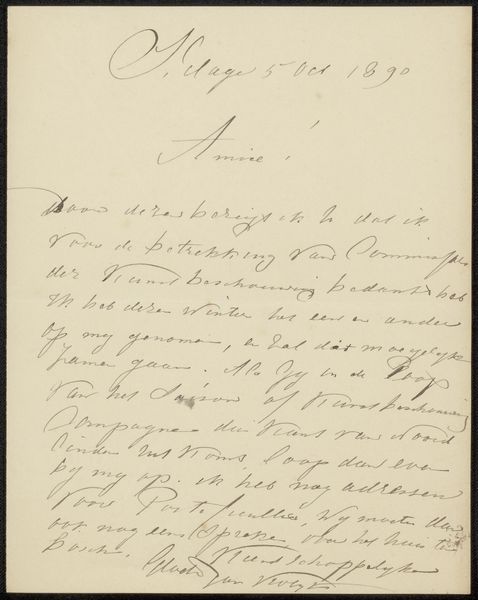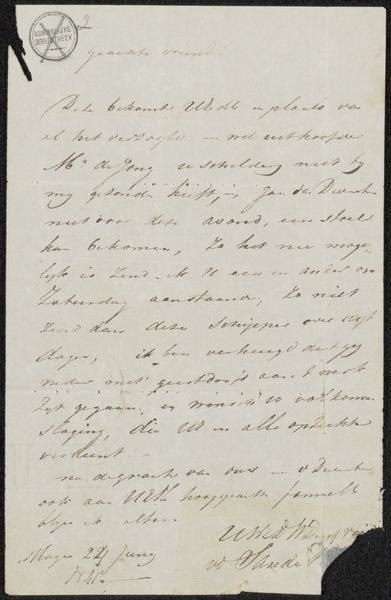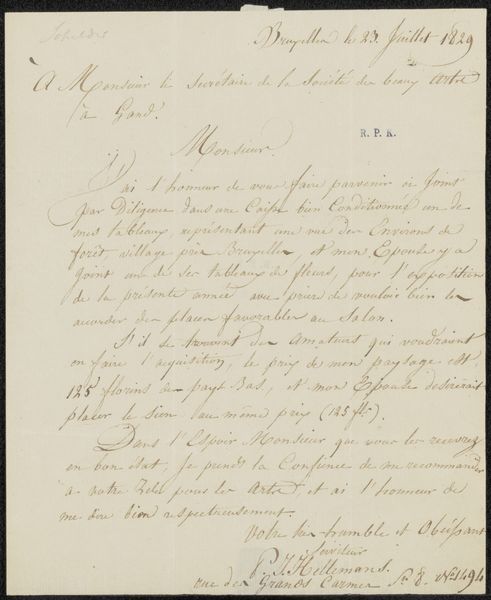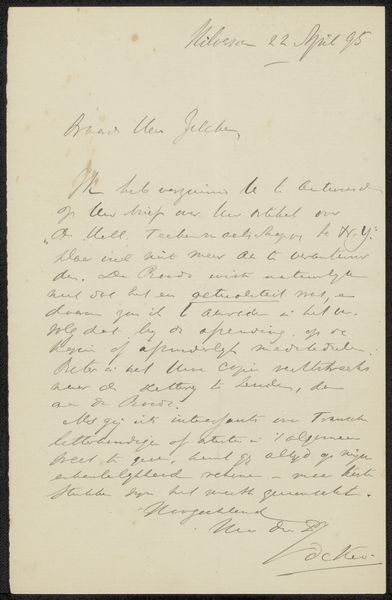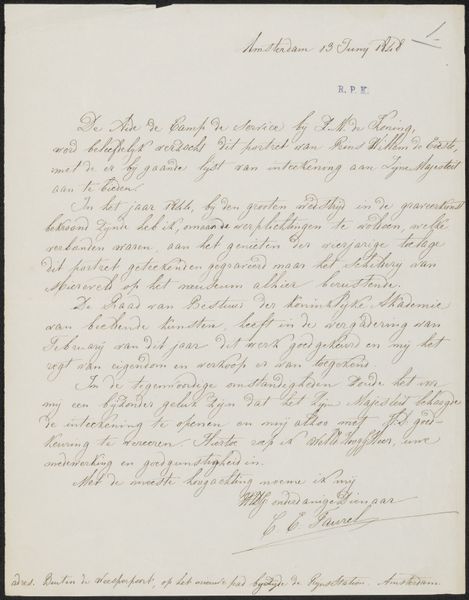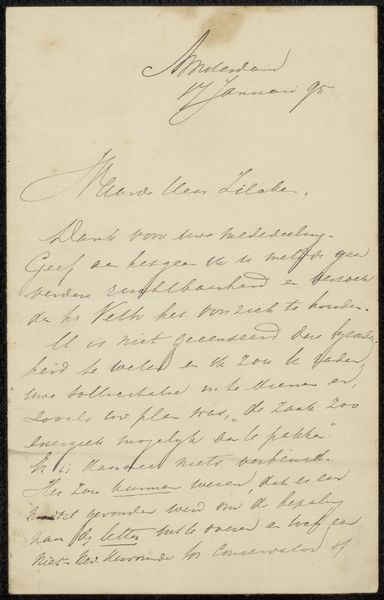
Brief aan Pieter Verloren van Themaat, secretaris van de Commissie van de Tentoonstelling van Levende Meesters in Utrecht Possibly 1866
0:00
0:00
petrusgerardusvertin
Rijksmuseum
drawing, paper, ink, pen
#
drawing
#
ink paper printed
#
paper
#
personal sketchbook
#
ink
#
pen
#
calligraphy
Copyright: Rijks Museum: Open Domain
Curator: This piece here is a letter from Petrus Gerardus Vertin to Pieter Verloren van Themaat, likely written in 1866. It’s held at the Rijksmuseum. Vertin was writing as secretary of the Commission of the Exhibition of Living Masters in Utrecht. Editor: My immediate response is to the letter's fragility and intimacy. The faded ink, the thinness of the paper... it speaks to a very specific moment and interaction. Curator: Exactly. We can think about the labour involved in its making and intended consumption. Vertin took up his pen and ink to draft and re-draft each letter of the text, the work involved feels quite profound. It wasn't just a quick typed memo! What about the handwriting itself, what does the form communicate about content for you? Editor: The cursive gives it a certain elegance, but I confess I struggle a bit with reading old scripts. I do note the address and salutation at the beginning which emphasizes a formality that likely underpinned 19th century art circles. The letter almost stands as a social record, doesn’t it? The content would give us an intimate understanding of that period. Curator: Yes, it's more than just artistic creation; it's embedded within a network of social relations. The commissioning, exhibiting, and even the simple act of corresponding – these letters become building blocks. The choice of paper, ink—even Vertin’s pen—all contributed to the communication he’s creating. It’s as much a designed object as a handwritten communication. It offers such a layered interpretation when thinking of labour and intent. Editor: Agreed. Seeing a document like this in a museum gives me pause. These personal exchanges are reshaped as public artifacts when curated and re-presented. How did it even find its way into the museum collection and what forces or intentions were in play at the time? Curator: Exactly—these letters reveal hidden networks of production and dissemination, a critical reminder that art emerges through collective engagement. Editor: Seeing something so human presented for public display does prompt you to consider what can be gleaned, not only from its material makeup but as an historical record as well.
Comments
No comments
Be the first to comment and join the conversation on the ultimate creative platform.
